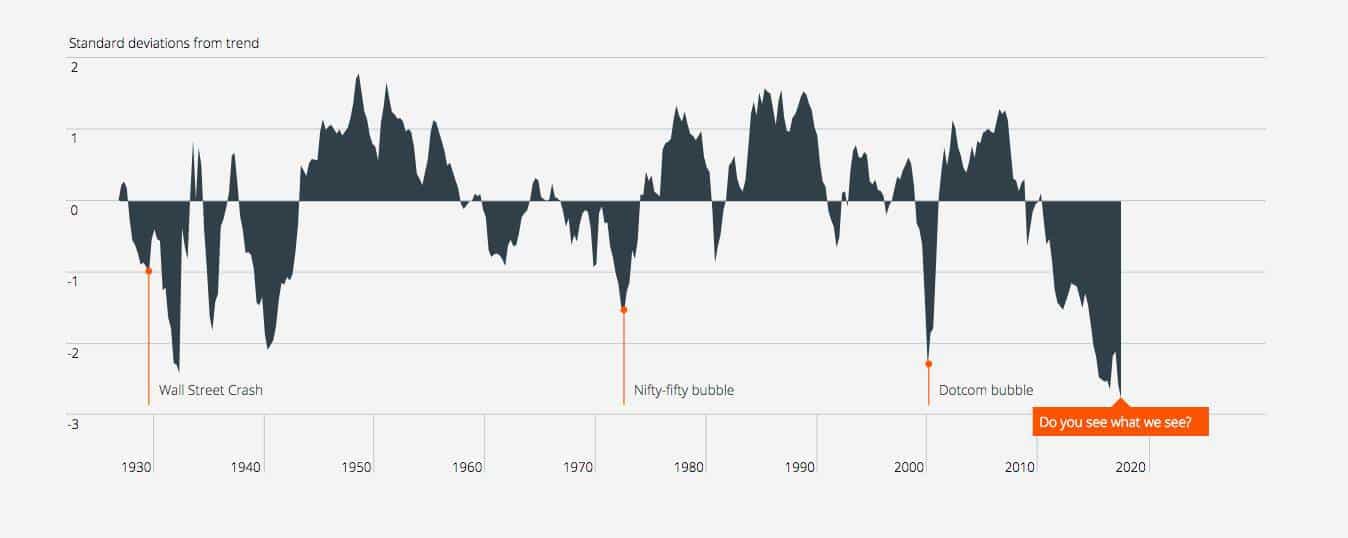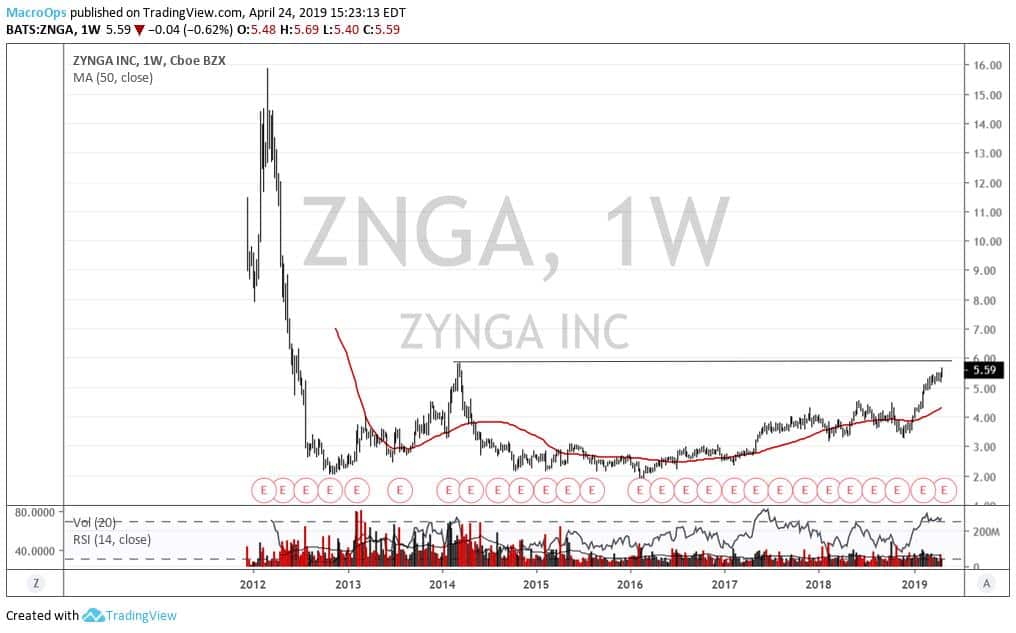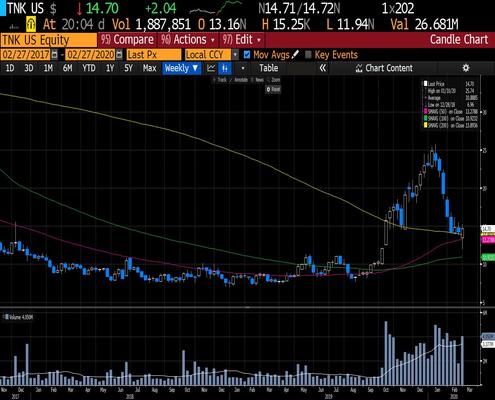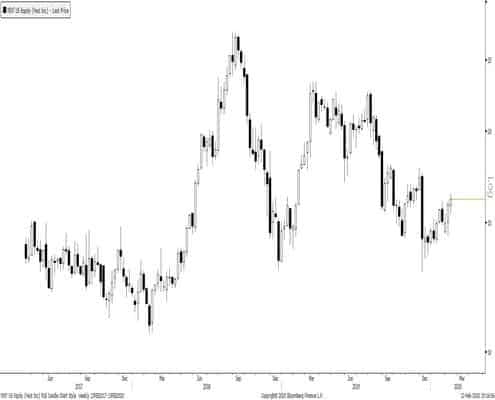Tyler here with your latest Friday Macro Musings…
As always, if you come across something cool during the week, shoot an email to alex@macro-ops.com and we’ll share it with the group.
Recent Articles/Podcasts —
Lessons From A Trading Great: Linda Bradford Raschke — Tyler breaks down market wizard Linda Bradford Raschke’s best trading advice.
Disney, Memetics, and Markets — Alex updates the Disney growth narrative, a theme we’ve been tracking here at Macro Ops for over a year. On the news of streaming service Disney+, the stock has made its way to 52-week highs.
Breaking Down A Market Edge — Tyler uses Michael Mauboussin’s BAIT acronym to break down what it means to have an edge in financial markets.
Articles I’m reading —
If you haven’t already go check out the Macro Tourist’s latest pieces on Modern Monetary Theory. Part 1 here and Part 2 here.
In this series, Kevin takes the side of the MMT professors and explains how government deficits may actually not matter as much as we all think if the central bank is the one holding the debt. Debt with no consequences sounds blasphemous. But perhaps there’s some truth to this? This question is worth exploring and Kevin Muir does a great job tackling this point.
The most interesting section of part 1 was how Macro Tourist explains bond issuance within the confines of MMT theory (emphasis mine).
Well, let’s think about this bond issuance within the confines of MMT theory. The government did not issue war bonds to finance the spending, but to alter the private sector’s behavior. Recall, the only constraint is in real terms. The government did not want individuals competing by buying goods that were needed in the war. So the government issued War Bonds to change their spending not to finance the war.
The important thing to realize is that governments always spend first and that bond issuance is simply a way of controlling inflation and altering private sector behavior.
That last part was an “ah-ha” moment for me.
Part 2 focuses on how to position if MMT were adopted full stop and the era of fiscal-austerity-monetary-easing came to an end.
Here’s Kein’s favorite trades for an MMT world.
- Sell US Bonds
- Put on a steepener
- Buy real assets
- Prioritize value over growth.
Read his full rationale here.
Next, I thoroughly enjoyed A Nobel Prize-winning psychologist says most people don’t really want to be happy from Quartz which explains Daniel Kahneman’s theory on happiness.
Kahneman claims that humans, for the most part, are not in search of happiness. Instead, they are looking for satisfaction. Happiness is a fleeting emotion, whereas satisfaction is a long-term feeling of fulfillment and accomplishment. Here’s a snippet from the article.
The key here is memory. Satisfaction is retrospective. Happiness occurs in real time. In Kahneman’s work, he found that people tell themselves a story about their lives, which may or may not add up to a pleasing tale. Yet, our day-to-day experiences yield positive feelings that may not advance that longer story, necessarily. Memory is enduring. Feelings pass. Many of our happiest moments aren’t preserved—they’re not all caught on camera but just happen. And then they’re gone.
So it’s not really the plane ride to Jamaica or that feeling after purchasing a brand new sports car that we are after. It’s about pushing forward our life’s narrative. If the narrative starts to derail and go to a place we didn’t envision we become miserable. If the narrative maintains course than we can remain satisfied on a day-to-day basis.
I think taking a hard look at the narratives we tell ourselves is important and could do wonders for our quality of life.
Video I’m Watching—
The Macro View on Gold (w/ Tavi Costa) | Trade Ideas — Tavi’s a macro analyst out of Crescat Capital. In this presentation, he discusses his bullish view on gold and suggests buying GLD with a stop at $111 and a target at $145.
We don’t agree with his thesis, but I enjoyed using the presentation as a Red Team tool.
Charts I’m Looking At—
Check out the performance spread between value and growth.
We are now over 2.5 standard deviations away from historical averages, which is greater than the dotcom bubble.
Who knows when this trend will reverse (maybe when we finally get a bear market). But this info is useful for those who are allocating capital on a longer time horizon. If you have time on your side it might make sense to start trimming some growth names and putting capital in stuff like this.
Book I’m Reading —
Dark Pools: The Rise of the Machine Traders and the Rigging of the U.S. Stock Market
Dark Pools is an informative read for anyone wanting to know the history behind how we went from big guys screaming at each other in the pits to computers executing trades in microseconds. Scott Patterson, in my opinion, is best in class when it comes to making arcane financial concepts entertaining.
Wine I’m Tasting —
I felt like mixing it up this week, so I want to share with you this fantastic pinot noir I tried from the Willamette Valley in Oregon.
It’s called Illahe. I’m not a wine expert but I found myself thoroughly enjoying this one. I confirmed with a few of my sommelier friends that this part of Oregon is famous for pinots. Anywho gives it a taste, you won’t be disappointed!
Trade I’m Considering —
As I was combing through charts last weekend I stumbled upon Zynga Inc. (ZNGA).
I haven’t watched this stock since it’s epic collapse post-IPO. I remember hearing my neighbor constantly complaining during that time. He had put a significant amount of his savings into the stock right when it IPO’d and continued to hold the bag for the entirety of its subsequent 80% collapse.
Anyway, ZNGA is back on my radar as the stock is trending up and out of a long-term base and making new multi-year highs.
A quick dive into the fundamentals tells us that a turnaround looks to be in the works here.
Zynga initially hit it big with their Facebook game “Farmville”. But since the stock crashed, they’ve severed ties with the social media giant and now focus on publishing their own games and apps for mobile devices. Their strategy is now centered around releasing free-to-play games and monetizing via advertising or in-game purchases. A new initiative is to make “watch-to-earn” offers which give players virtual currency bonuses if they choose to watch an ad.
Zynga has also decided to branch out, license IP, and launch some games based on Harry Potter, Game of Thrones, and Star Wars. These titles won’t come to market until late 2019 or 2020.
So far, the new strategy seems to be working. But we still have plenty of digging to do before we put on a position.
Quote I’m pondering —
Talent hits a target no one else can hit; Genius hits a target no one else can see. ~ Arthur Schopenhauer
That’s it for this week’s macro musings.
If you’re not already, be sure to follow me on Twitter: @TylerHKling. I post my mindless drivel there daily.
Have a great weekend.











